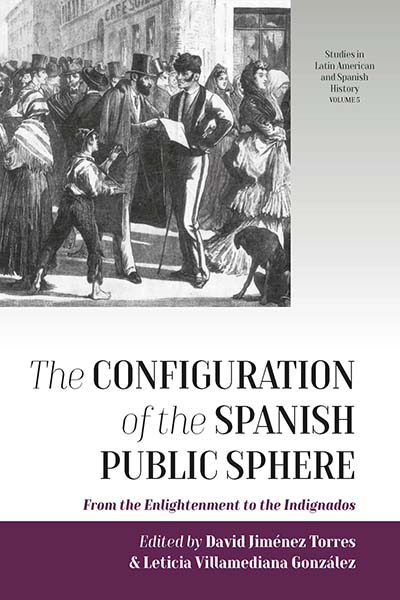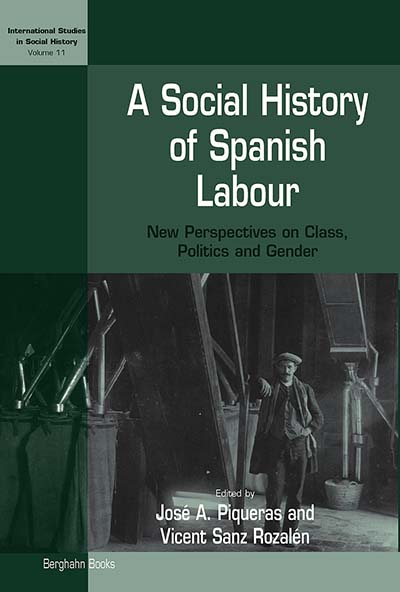
Series
Volume 5
Studies in Latin American and Spanish History
See Related
History JournalsEmail Newsletters
Sign up for our email newsletters to get customized updates on new Berghahn publications.
The Configuration of the Spanish Public Sphere
From the Enlightenment to the Indignados
Edited by David Jiménez Torres and Leticia Villamediana González
326 pages, 15 illus., bibliog., index
ISBN 978-1-78920-235-9 $135.00/£104.00 / Hb / Published (June 2019)
eISBN 978-1-83695-754-6 eBook
Reviews
“This volume combines transnational theoretical and philosophical approaches as well as data-driven analyses to provide a number of innovative answers…In conclusion, this volume is a vigorous working through of the question of whether or not Habermas’ theory contributes to our understanding of cultural, social and political life in Spain since the eighteenth century. The answer across the board is a resounding ‘yes’.” • Bulletin of Spanish Studies
“A valuable critical analysis that sheds new light on the evolution of a concept at the root of many current social and political debates. A notable book that will be of interest to specialists and non-specialists alike.” • Luisa-Elena Delgado, University of Illinois at Urbana–Champaign
“This book makes a fresh and significant contribution to our informed understanding of the interplay of cultural, political and social forces in the emergence of the modern Spanish public sphere. It tackles a wide range of topics, phenomena and institutions that have determined the configuration and the nature of public debate, providing a comprehensive overview of the most salient features of the modernization process.” • Gregorio Alonso, University of Leeds
Description
Since the explosion of the indignados movement beginning in 2011, there has been a renewed interest in the concept of the “public sphere” in a Spanish context: how it relates to society and to political power, and how it has evolved over the centuries. The Configuration of the Spanish Public Sphere brings together contributions from leading scholars in Hispanic studies, across a wide range of disciplines, to investigate various aspects of these processes, offering a long-term, panoramic view that touches on one of the most urgent issues for contemporary European societies.
David Jiménez Torres is Associate Professor at Universidad Camilo José Cela in Spain. He has taught at the University of Manchester and University of Cambridge, where he obtained his doctorate. He is the author of the monograph Ramiro de Maeztu and England: Imaginaries, Realities and Repercussions of a Cultural Encounter (2016). He is also a novelist and a columnist.
Leticia Villamediana González is Senior Teaching Fellow in Hispanic Studies at the University of Warwick. She has taught at Queen's University, Belfast, where she obtained her doctorate. Her monograph Anglomanía: La Imagen de Inglaterra en la Prensa Española del Siglo XVIII (2019) focuses on the study of anglomania and anglophobia in the Spanish press and their contribution to Spain’s programme of Enlightenment reform.




